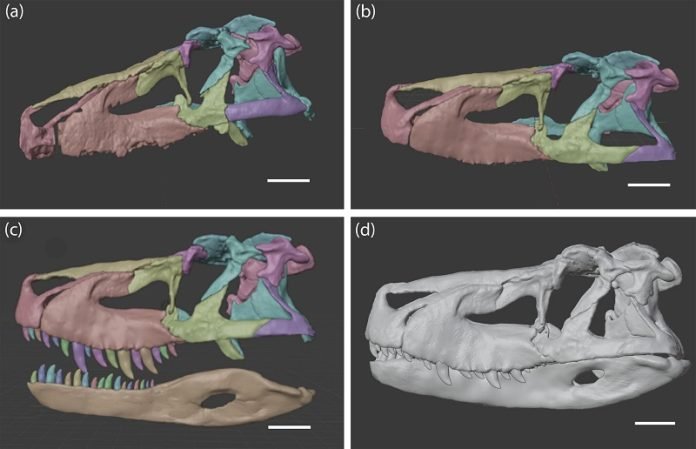
Long, long ago, about 230 million years back, there was a massive reptile named Saurosuchus.
It was believed to be one of the top predators of its time.
But a new study tells us that this giant reptile’s bite wasn’t as strong as we thought. In fact, its bite was weaker than some of the crocs we have today!
Researchers from the University of Birmingham took a close look at the skull of Saurosuchus to learn more about it.
This reptile was pretty big, measuring between 5–8 meters and weighing over 250 kg. Because of its size, people always thought it must have had a powerful bite. But that’s not what the scientists found.
By comparing its skull with another big predator, the Allosaurus dinosaur, they discovered something surprising.
Even though their skulls seemed similar in strength, Saurosuchus had a much softer bite. If we talk numbers, Saurosuchus had a bite force between 1015–1885 N.
That’s similar to a modern-day crocodile called the gharial.
To understand how soft that is, here’s a comparison:
- Allosaurus dinosaur: 3,572 N
- Big saltwater crocodiles today: around 16,000 N
- The famous Tyrannosaurus rex dinosaur: 17,000-35,000 N
Dr. Jordan Bestwick, a scientist who studies old animals’ bones, explained, “Even though Saurosuchus was big, its bite was pretty weak for its size.
It didn’t hunt or eat like the dinosaurs that came after it. In fact, its bite was similar to the gharial’s, a kind of crocodile with a pretty gentle bite.”
Now, this doesn’t mean Saurosuchus wasn’t scary. You’d still want to stay far away from it! But when it came to eating, it probably ate only the softer parts of its food because it couldn’t break through the hard bones.
Instead of munching everything down, Saurosuchus was probably a careful eater. The study suggests it used its back teeth to tear off the meat. Unlike the big dinos that came later, this old reptile had a more block-like head and thinner bones in its nose. This might have been why its bite was softer.
Dr. Stephan Lautenschlager, another scientist involved in the study, said, “Saurosuchus must have been scary.
But when it ate, it was a different story. Its head shape and weak bite made it eat differently from the big dinos that followed. While those later dinos could eat almost all of their food, Saurosuchus might have left more behind. And the leftover bits? Other animals that eat dead stuff probably enjoyed those!”
Molly Fawcett, who also worked on the study, added, “It’s fascinating. When you look at the heads of these ancient top predators, they look a lot like the famous meat-eating dinosaurs like T. rex. But their bites were much weaker!”
So, the next time you think of big, scary, ancient reptiles, remember: not all of them had bone-crushing bites. Some, like Saurosuchus, preferred their meals a bit softer!
The study was published in The Anatomical Record.
Follow us on Twitter for more articles about this topic.
Source: University of Birmingham.



